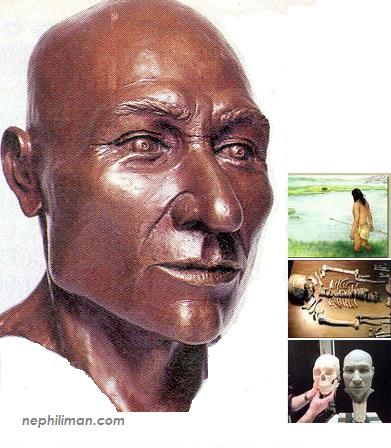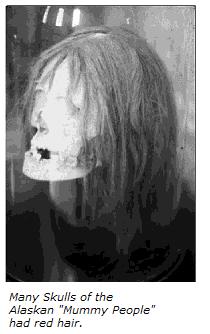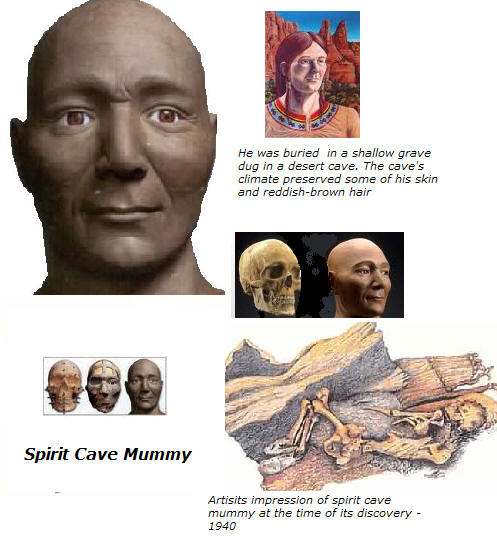|
Ancient Caucasian Remains in America The Ainu in North America
A handful of skeletal remains have come to light in recent years which suggests that the Modern Amerindians, descended primarily from Mongolian stock were not truly the first Americans. The Ainu race of Japan appears the be the last remaining vestiges of a race that once roamed the Pacific Areas of Asia and the Americas, they skeletal remains may possibly be related to this race but they also bear strikingly Caucasian features.
This is an Archived Article - for the updated version see - Lost Races of America
|
|
|
|

Ancient Encounters: Kennewick Man and the First Americans. Kennewick Man |
|
|
Anthropologist Joseph Powell of the University of New Mexico eventually examined Kennewick man more thoroughly than previously permitted, his conclusions contradicted previous findings . The Kennewick Man was in fact not European but more closely resembled Pacific Islanders and the Ainu people of northeast Asia, not Amerindians or Caucasians. Twentieth Century textbooks agreed on the hypothesis that hunter-gatherers migrated across the hypothetical Bering Strait land bridge. While some still adhere to this hypothesis, other scientists speculate that there were numerous waves of migration to the Americas. Variant races discovered among ancient skeletal remains support this theory. Kennewick Man was an individual representative of one of the multiple races that roamed America in antiquity. Evidence of other migrations to America exists in The Fuegians, a people indigenous to the furthest point in the Americas from the Bering Straights - Tierra del Fuego.
|
|
Discovered in 1965, the Gordon Creek woman had a relatively small face with a distinctive alveolar prognathism 1 , a trait more common in Westerners {European and African} rather than in Amerindians. She is hypothesized to be the same race as Kennewick Man. 1.{ Prognathism is a term used to describe the position of the mandible and/or maxilla to the skeletal base where either of the jaws protrudes beyond a predetermined imaginary line in the sagittal plane of the skull. |
"Scientists in Britain have identified the oldest skeleton ever found on the American continent in a discovery that raises fresh questions about the accepted theory of how the first people arrived in the New World. The skeleton's perfectly preserved skull belonged to a 26-year-old woman who died during the last ice age on the edge of a giant prehistoric lake which once formed around an area now occupied by the sprawling suburbs of Mexico City." Steve Connor University Texas
In December 2002, it was announced that a skeleton from Mexico City's National Museum of Anthropology , had been identified as more than being approximately 13,000 years old - the oldest skeleton yet found in the Americas.
The long faced skull was what attracted the attention of scientists, as the Amerind population has broad Mongolian shape skulls. Scientists speculated that the skull was possibly of Ainu extraction, like the Kennewick Man .
"The museum knew that the remains were of significant historical value but they hadn't been scientifically dated," Stated the Museums Dr Gonzalez said. "I decided to analyse small bone samples from five skeletons using the latest carbon dating techniques. I think everyone was amazed at how old they were," she said.
 |
"Alaska's Mummy people belonged to a prehistoric ethnic group inhabiting the Aleutian Islands from 7,000 years ago until historic times. There were still a few members of this mysterious race surviving in the Western Most Alaskan Islands when the Russians arrived in 1741. The Aleuts who inhabit the Alaska at the present time are a mixture of Eskimos ... and the distinctly different "Mummy" People.
The origin of the long dead Mummy people is unknown.. Few Archaeologists have studied their remains ... some scientists remark on resemblance to the ancient Ainu." Discovering the Mysteries of Ancient America.
"Speculation arose that people of the group ancestral to the Ainu may have been among the first to settle North America. This theory is based largely on skeletal and cultural evidence among tribes living in the western part of North America ... It is possible that North America had several peoples among its early settlers and that the Ainu may have been one of them, perhaps even the first. The best-known example supporting this theory is probably Kennewick Man. In 1912 an expedition discovered white Inuit with red hair and blue eyes and implements which led to the belief that they may be descendants of old Norse Vikings who visited North America from 1000 onwards. http://www.probertencyclopaedia.com/cgi-bin/res.pl?keyword=Inuit&offset=0
|
External Links |
|
|
The First Americans: Race, Evolution and the Origin of Native Americans
